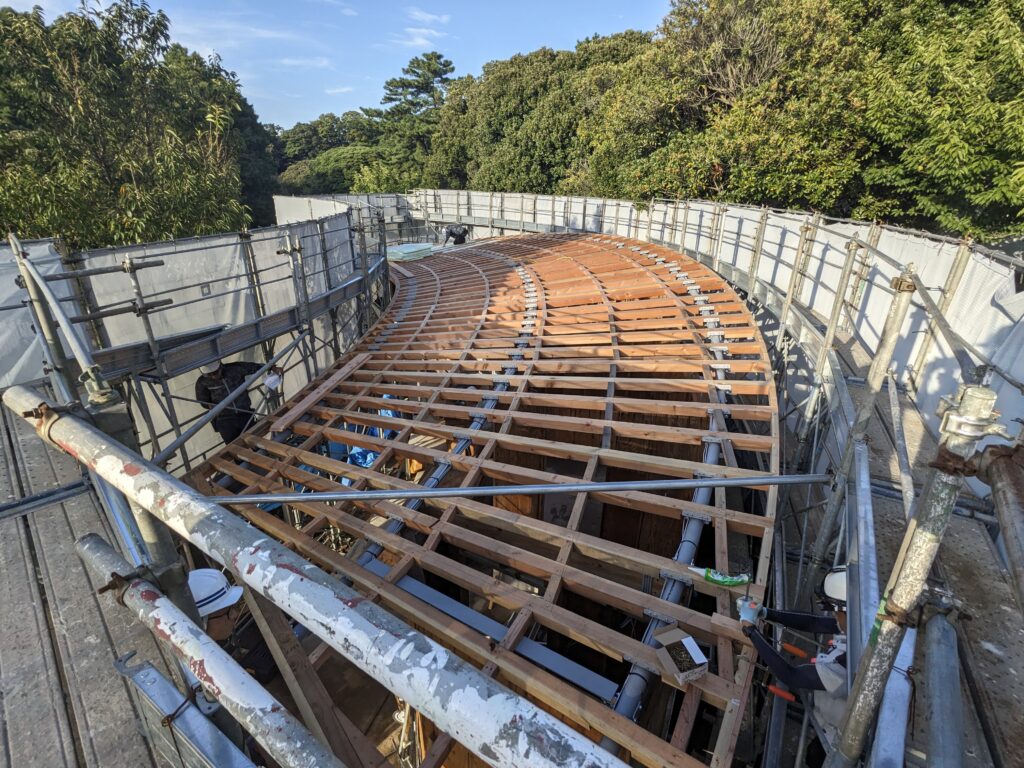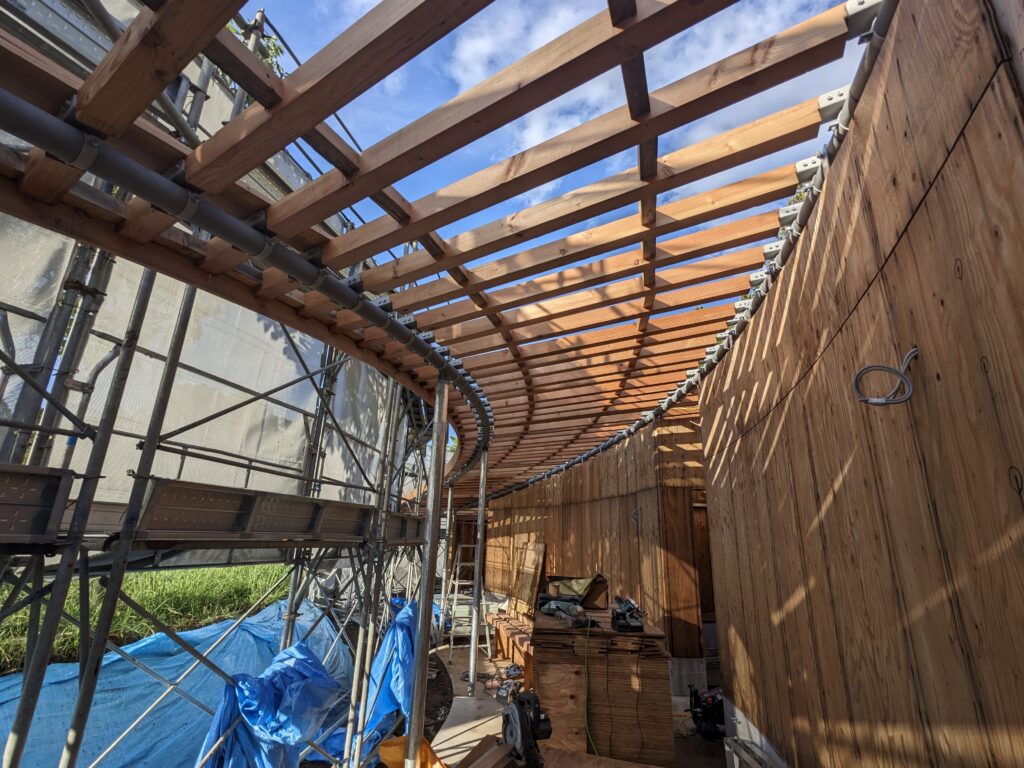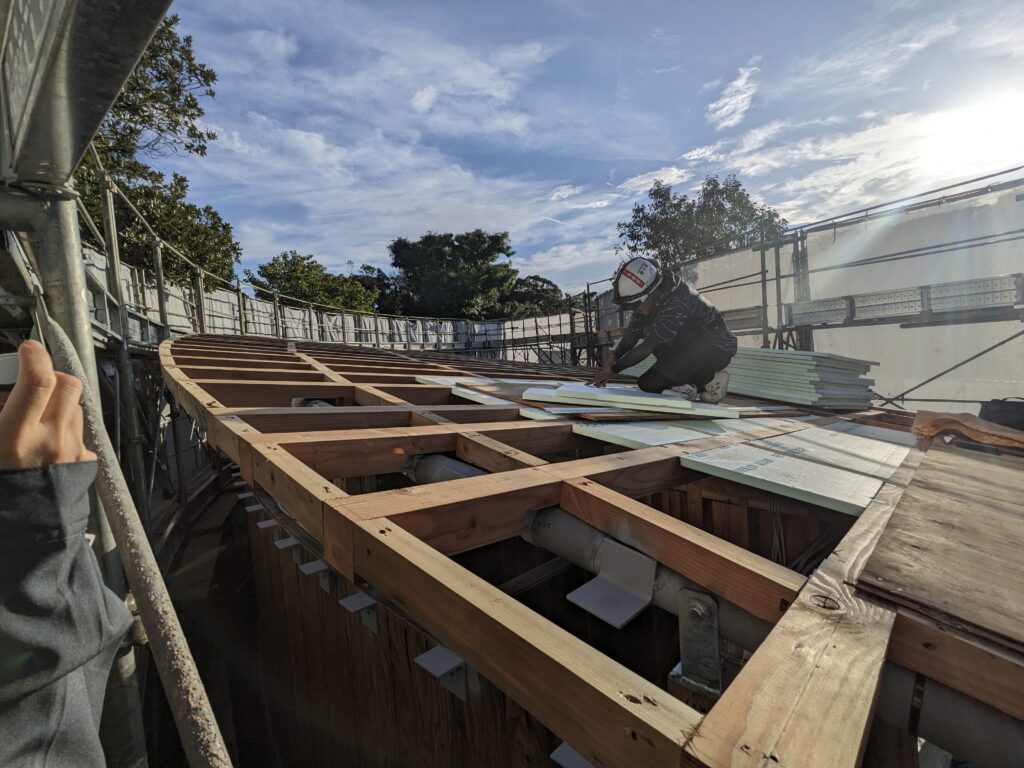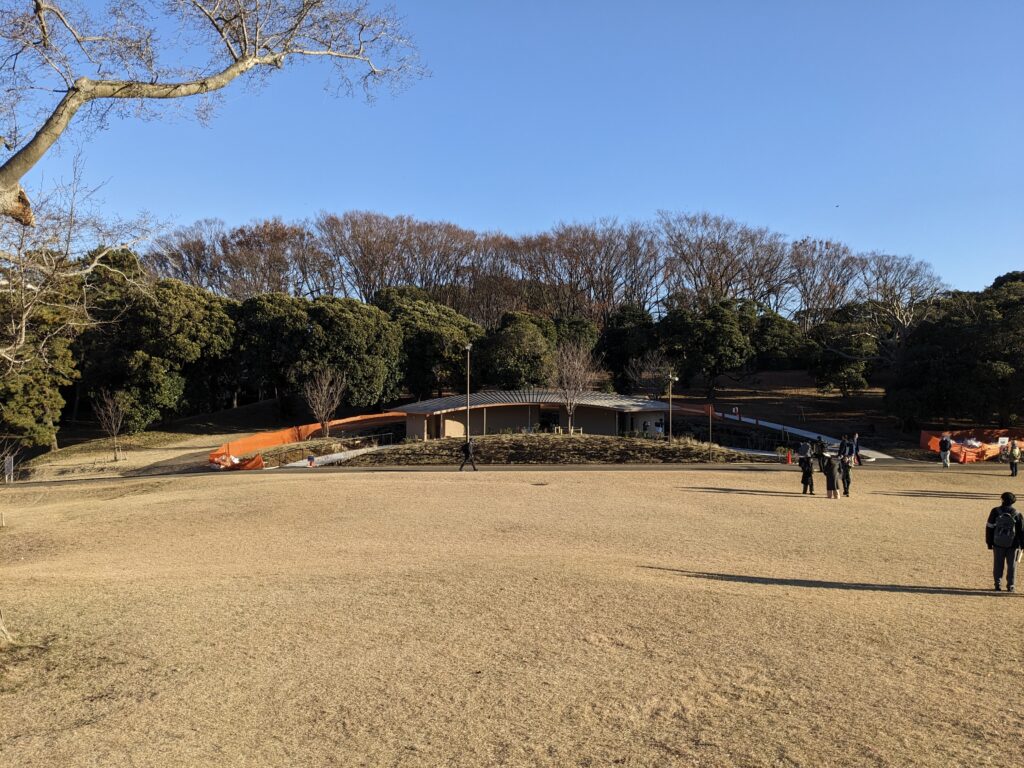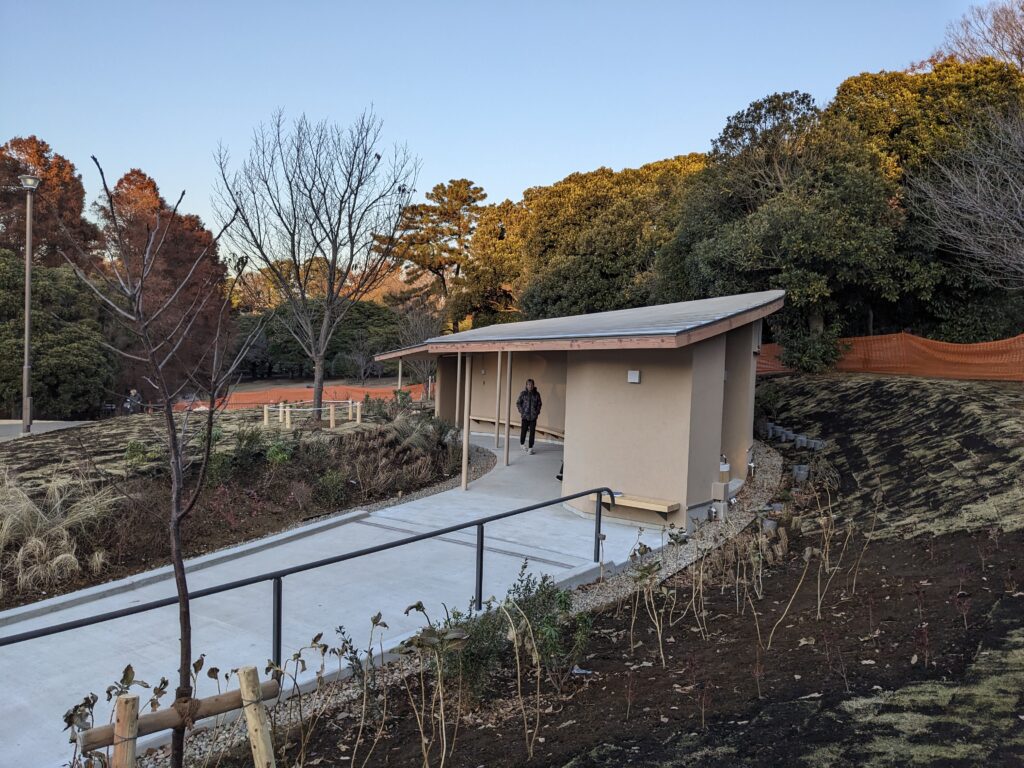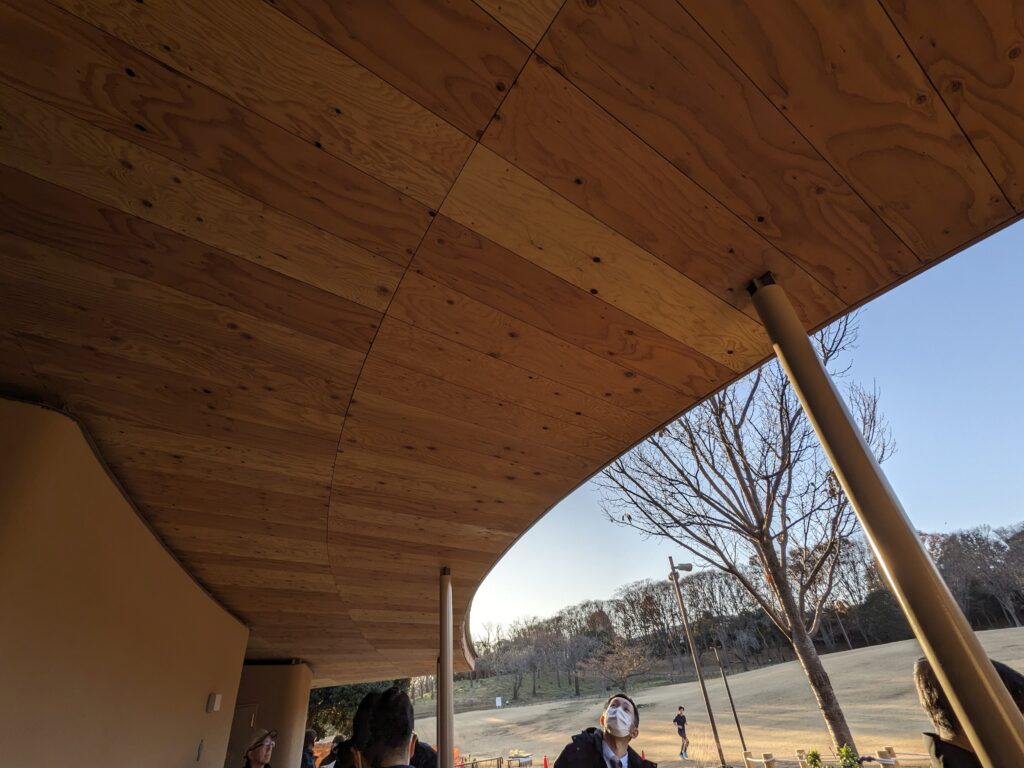滋賀県立大学 永井拓生+サステナブル構造デザイン研究室
THE UNIVERSITY OF SHIGA PREFECTURE
滋賀県立大学 永井拓生+サステナブル構造デザイン研究室
THE UNIVERSITY OF SHIGA PREFECTURE
滋賀県立大学 永井拓生+サステナブル構造デザイン研究室
THE UNIVERSITY OF SHIGA PREFECTURE
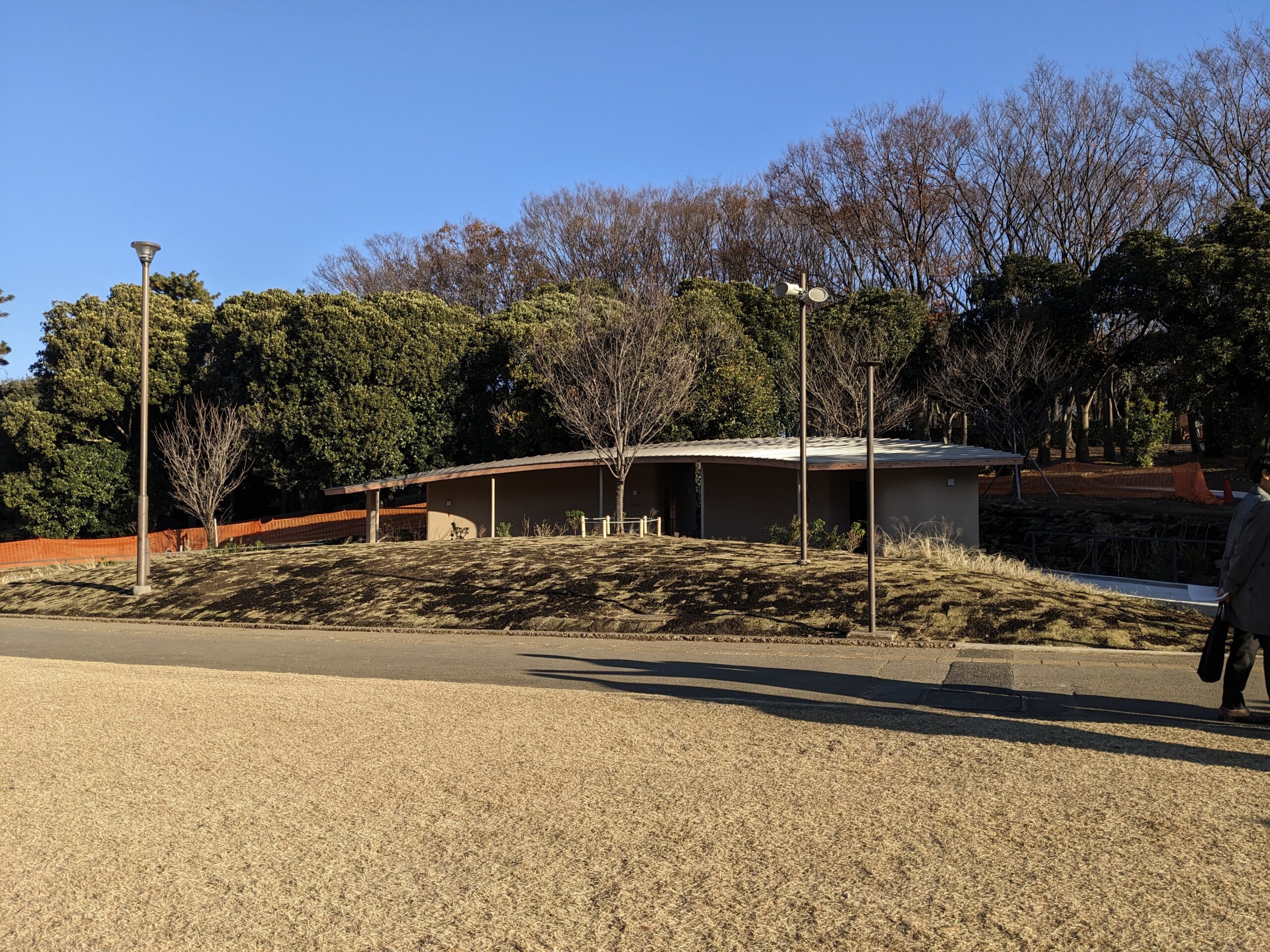
Substructure / Foundation
The site is located on a hill with cohesive soil, and the soil several meters below the surface is generally sound. However, the ground directly beneath the structure was originally part of the infield of the former Negishi Racecourse and was artificially filled during the period of U.S. military control. As a result, the surface layer consists of relatively soft fill and embankment soil. To address this, ground improvement was carried out using “eco-piles,” and a mat foundation was adopted, shaped to follow the natural terrain.
Superstructure
The building features a crescent-shaped floor plan, with both ends of the plan gradually rising toward the center in both the floor and roof levels, resulting in a complex spatial form. The primary structure adopts a conventional Japanese timber construction system, with structural plywood shear walls arranged in both tangential (circumferential) and radial directions to ensure seismic and wind resistance.
The roof is a gently sloping three-dimensional curved surface, enveloping both planar and vertical inclinations. A key structural challenge was the configuration of the roof members. In this project, three curved steel beams were arranged along the tangential direction of the plan, and timber rafters were installed at regular intervals in the radial direction on top of these beams to form the roof surface. Although the roof geometry is composed of arcs in plan view, its slopes vary gradually along the tangential direction due to vertical undulation. To accommodate this complexity, specially designed hinge connectors with three rotational degrees of freedom were used at the joints between rafters and steel beams, thereby standardizing the detail and improving constructability.
Design Competition Proposal: Atsuhiko Amakasu + Hao Zhang
Architectural Design: Amakasu Architects + nenlin
Structural Design: Eureka + Waikong Lam
Program: Public Toilet
Year of Completion: 2024
地盤・基礎
敷地は高台の粘性土地盤上に位置し,地表面より数メートル下部の地盤は良好である。しかし,本建築物直下の地盤は,もともと根岸競馬場の内馬場であった場所を米軍管理下の時代に人工的に造成し形成されたと考えられ,表層は盛土・埋土によって構成されたやや軟弱な地盤であったため,地盤改良(環境パイル)を行ったうえで,地形にあわせた形状のべた基礎としている。
上部構造
本建築物は三日月形の平面形状に加え,平面の両裾から中央に向かってゆるく床・屋根ともに徐々にレベルがあがる複雑な形態である。主体構造は木造在来軸組み工法とし,接線方向(円周方向)と放射方向にバランスよく構造用合板張りの耐力壁を配置し,耐震・耐風性能を確保している。
屋根は平面・立体的な傾斜を包絡するために緩い勾配を持つ3次元曲面となっており,屋根面を構成する部材をいかに配置するかがポイントである。本計画では,平面の接線方向に曲線状の鋼管梁を3通り設け,それらの梁の上に放射方向に木の垂木をおおよそ一定間隔で架け並べることで屋根面を構成した。屋根の曲面は平面的には円弧を組み合わせた幾何学ではあるものの,立面的にも傾斜をもつため,屋根の勾配は接線方向に沿って徐々に変化する。そこで,垂木と鋼管梁の接合部に3軸周りに回転可能なヒンジ金物を用いディテールの統一化し,施工性の合理化を行っている。
コンペ案作成:甘粕敦彦+張昊
意匠設計:甘粕建築設計事務所+nenlin
構造設計:Eureka+Waikong Lam
用途:公共トイレ
竣工年:2024年
